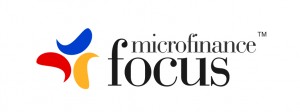Yunus at e-MFP EMW: social entrepreneurs and social business enterprises
Yunus is not opposed to anybody making money; but there is a ‘green zone’: cost of fund +10-15%. This is one way to allow profit while maintaining social purpose of microfinance.
The other things that must be prioritised are focusing on the poorest people, on women, and on income-generating activities. And we must emphasise ‘ownership’ of microcredit programs. This is something that was emphasised at Grameen Bank from the start. Now the 8.5m borrowers at Grameen own their microcredit organisations.
So for him, if these criteria are met, it counts as microcredit/microfinance.
He talks too about Grameen America, with now 5 branches in New York City, with the first one approaching break-even. Two years ago a branch was opening in Omaha Nebraska, and last year one in San Francisco. Soon, another will be opening in Charlotte, NC.
Everytime he sees a problem, he says, he tries to look to create a business to solve that particular problem. NOw there are dozens – some health, some education-oriented. One big one is related to the environment – Grameen Shakti (Grameen Solar). It was extremely difficult when it began 16 years ago; even selling two solar packages per month was a challenge. So to build up confidence it took years – and this month the one millions solar home system will be built in Bangladesh…


This ”green zone” (cost of fund + 10-15%) perhaps the only benchmark interms of setting microcredit interest rate worldwide.
Thank you Yunus … I used this logic on many of our discussions on microcredit interest. One such article is posted (and highly rated at http://www.microfinancegateway.org and others) titled: SUSTAINABLE RURALFINANCE: PROSPECTS, CHALLENGES AND IMPLICATIONS:
http://www2.gtz.de/network/wiram-afrika/gtz-community/me-library/detail.asp?number=5130
Regards
Getaneh Gobezie
Gender and Ruralfinance Consultant
E-Mail: getanehg2002@yahoo.com